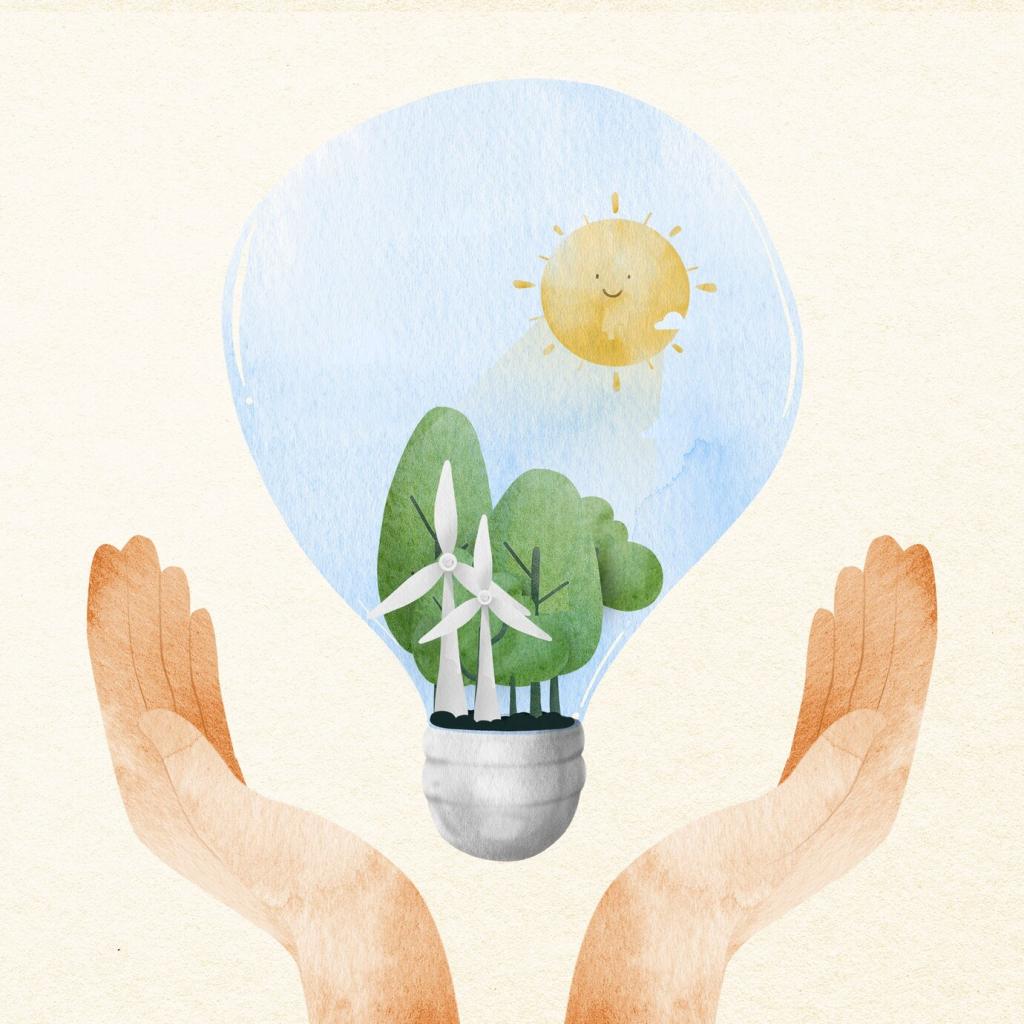Creative Approaches to Greener Living Spaces
Discover how to reimagine your home or workspace with sustainability in mind by exploring innovative and artistic solutions. Greener living is more than energy-saving appliances—it’s about integrating environmentally friendly habits and materials seamlessly into your daily life. Whether you’re a homeowner, a renter, or a workspace visionary, these creative approaches open doors to personal well-being and a healthier planet.

Living walls and vertical gardens are powerful tools to combat the grayness of city life. By using innovative structures to arrange soil and plants vertically along walls—both indoors and outdoors—you not only save horizontal space but dramatically increase greenery. This increases oxygen levels, improves air quality, and provides natural insulation to your home. Furthermore, vertical gardens often become beautiful focal points, encouraging mindfulness and creativity in compact living spaces. Whether a lush herb wall in the kitchen or a vibrant patch of ferns in the living room, these living installations foster sustainability and well-being while maximizing the utility of limited urban environments.
Biophilic Design for Urban Homes
Upcycling, Repurposing, and Artistic DIY Solutions
Transforming old ladders into quirky bookshelves or pallets into rustic coffee tables not only saves items from the landfill but also brings individuality to your home. Each reclaimed piece tells a story and often sparks conversation. By using sturdy, well-loved objects for furniture, you reduce demand on new resources and connect with the history of your materials. This approach encourages creative problem-solving, allowing you to customize your environment to suit both your needs and your eco-values. The process of creating such pieces is rewarding and inspires further sustainable creativity.
With a bit of ingenuity, what once was garbage becomes art. Glass jars morph into eye-catching vases, discarded textiles weave into colorful wall hangings, and even bottle caps can assemble into striking mosaics or frames. Artistic upcycling invites you to experiment, transforming the detritus of modern living into cherished decor. This not only curbs waste but also encourages mindfulness about consumption. Infusing your space with art made from rescued materials makes sustainability a visible, daily practice—one that can be shared with friends and family, inspiring others to hunt for beauty in the overlooked.
Engaging hands of all ages in eco-friendly projects cultivates an appreciation for sustainability while offering memorable family experiences. From homemade bird feeders crafted from milk cartons to planters fashioned from plastic bottles, DIY projects teach valuable skills while repurposing materials. These activities foster a sense of accomplishment, spark curiosity, and help instill lifelong green habits. Through collaborative crafting, both children and adults learn about the impact of waste and the value of giving new life to old objects, creating a ripple effect of environmental stewardship within communities.
Energy Smart Technologies and Green Gadgets
Smart Thermostats and Climate Control
Smart thermostats represent a leap forward in optimizing home energy use. By learning your daily routines and adjusting heating or cooling accordingly, these devices eliminate unnecessary energy expenditure. Coupled with remote controls via smartphones, users can fine-tune their environment from anywhere, ensuring comfort without waste. Over time, data-driven adjustments lead to significant reductions in utility bills and carbon emissions. Climate control technology is now an accessible tool for anyone seeking to make their home both more eco-friendly and more attuned to their personal lifestyle needs.
Solar-Powered Innovations for Everyday Use
Solar-powered gadgets have expanded far beyond rooftop panels. Today, you’ll find solar-powered chargers, garden lights, water pumps, and even kitchen appliances that harness the sun’s energy. These devices are increasingly affordable and easy to integrate into daily life, reducing dependence on fossil fuels and utility grids. By swapping out conventional tools for their solar-powered counterparts, households enact immediate, visible changes that support the planet. Such choices foster awareness of renewable resources, acting as everyday reminders of the power of green innovation.
Water-Saving Devices and Practices
Conserving water is a crucial part of sustainable living, especially in regions vulnerable to drought. Modern technology brings an array of devices—like low-flow showerheads, dual-flush toilets, and sensor-activated faucets—that drastically reduce water usage without sacrificing functionality. Smart irrigation systems tailor watering schedules to the weather and soil conditions, preventing waste in gardens and landscapes. By embracing these solutions, you not only lower utility expenses but actively contribute to the resilience of your community and the preservation of natural ecosystems.
